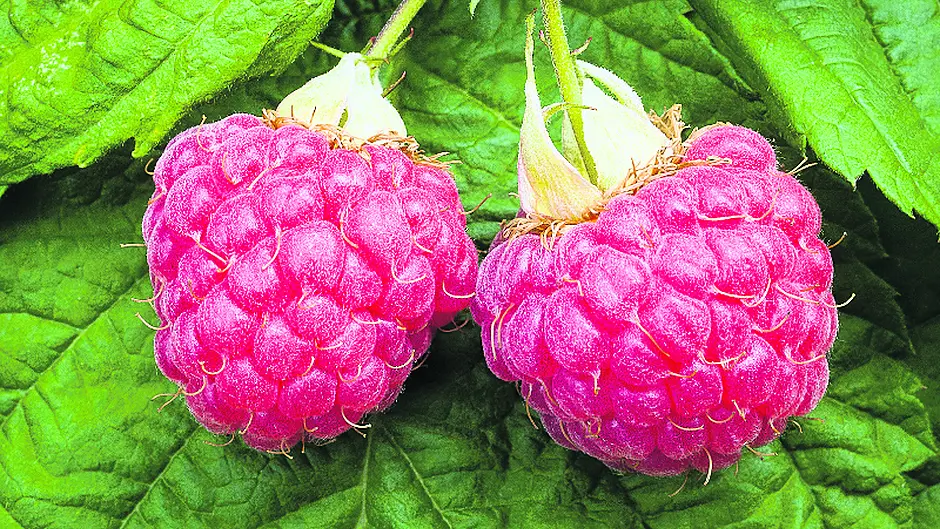Gardening with Joyce Russell
IF you haven’t already pruned soft fruit bushes then this is the time to do so. Don’t leave it much later or plants will use energy for bud burst on branches that are due to be removed.
Try to keep rows of fruit open and untangled so plants can grow with plenty of light. This also makes picking easier when plants are in full leaf. I know I am as guilty as the next gardener of wanting to hang onto as much fruiting potential as I can, but sometimes it’s a case of the more you remove and open up, the better the rest will perform.
Raspberry canes that fruited last summer will be brittle and dead at this point. Cut them down to the ground to make space for the strong young canes that grew last year, to fruit this summer. Canes that fruited last autumn should be cut down to 20cm above the ground. New canes will grow on these plants this summer and these will be strong enough to bear autumn fruit.
Blackcurrant bushes fruit on new growth that was made last year. Cut out most stems that already bore fruit as low as you can, while leaving an outward pointing bud to grow a new shoot in the months to come. You will probably have to remove some short new shoots that have grown high up old stems, but this is no harm. The aim is to leave lots of long year-old shoots to bear plenty of fruit clusters this year.
Spring cabbage
These plants will stand through most weather that our winters can throw at them. They come through it all with plenty of tasty leaves that are ready to harvest in early spring.There are a couple of things to watch out for if you want to grow large and delicious heads of spring greens. The first is slugs: these beasts love to hide in the hearts of plants and feast on the leaves at night. They are less active in cold weather than in warmer months, but they can still disfigure a cabbage plant. A quick trip with a torch after dark will reveal them as they feed, so you can pick off the pests and dispose of them as you see fit.
The second thing is to make sure to give young plants a feed in January. Make a liquid manure ‘tea’ to increase soil nitrogen for promoting leaf growth, or use a seaweed based feed to give a nutrient boost.
A scatter of pure wood ash is always useful: it helps repel slugs, raises the alkalinity of the soil a little, and it is full of potash too.
Sweet peas
Many gardeners sow sweet peas in January and swear they perform better than autumn sowings. They certainly flower earlier than spring-sown plants and they are pretty hardy if they have been raised from seed at low temperatures.
Sow in pots or modules and keep them in a well-lit place that doesn’t drop below 5 degrees Celsius. Once the seedlings are up they will stand through slightly lower temperatures but it’s best to keep pots where compost doesn’t freeze. Slow, steady growth is what you are aiming for.
Note: rats and mice will dig up and eat pea seeds if given the opportunity, whether the seeds are from flowering varieties or ones that we grow to eat.
Flower borders
These can look a bit tatty at this time of year, but take a close look and you will see some small shoots taking their clue from the lengthening days and pushing upwards. It’s important to remove dead stems from last year while it is still easy to do so.
If new shoots are left to twine amongst old growth then untangling the two becomes difficult.
Some plants may have spread further than you want, so use a spade to trim round edges and reduce them down to a size that fits. This is also a good time to divide large clumps if you want to increase the number of plants: just don’t do this if the soil is frozen or likely to freeze.
You can still keep the crowns of vulnerable plants, like peonies, covered for a few more weeks. They won’t start to sprout until temperatures rise enough to warm the soil.
Sowing seeds
It is still too early to sow most vegetable seeds, but some lettuce and salad leaves can be started in trays.
Early varieties of peas and broad beans can perform very well from a January sowing. Start seed in pots in a greenhouse or protect sowings with a cloche.
Sow aubergines at 20C in a propagator or on a warm window ledge. These early sowings produce plants that flower early and stand the best chance of cropping well.






